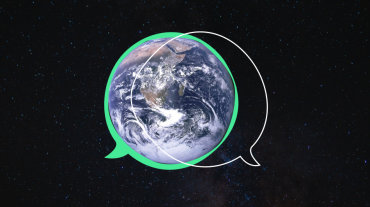Why buying less is key to living in balance with nature
In honor of Earth Overshoot Day, we’re adding a new carbon reduction goal to the Klima app.
As we walk down the supermarket aisle, we’re surrounded by an overwhelming variety of products, neatly organized and ready for us to consume. We got so used to finding what we need 24/7 that it's easy to forget that the availability of these goods isn’t infinite. What’s really inside all of those jars, cans, and packages are limited natural resources. And that’s why it’s so important to talk about Earth Overshoot Day.
The reason behind Overshoot Day
Today, July 28, marks the date when humanity’s demand for biological resources has exceeded what Earth can naturally regenerate during this entire year. In other words, we’re living in ecological deficit with our planet for the rest of 2022, overexploiting our ecosystems by extracting more resources than they can sustainably produce. This is why we’re seeing more overfishing, land degradation, and CO2e waste being pumped into the atmosphere. And it all boils down to one reason. Wealthy nations are buying way too much stuff.
The last time planet Earth was able to regenerate enough resources for the entire year was in 1971. Since then, Earth Overshoot Day has been creeping up the calendar year after year, so much so that we’d currently need 1.8 Earths to keep up with our current consumption levels. But today isn’t only a reminder of the environmental crisis we’re going through. Above all, Earth Overshoot Day should serve us as a call to action to shift that date further back towards the end of the year. And we can do so if we just start consuming less.
A new reduction goal: let’s buy less
In honor of Earth Overshoot, we’ve added a new reduction goal in the Klima app designed to help you shop less, better, and more responsibly.
So is it all down to us? While it’s true that corporations should completely move away from the “take, make, dispose” production model, consumers can have a large impact, too. The decisions we make every day — from buying a new pair of jeans to throwing a pack of moldy strawberries in the garbage — have a huge impact on the climate and our environment. In fact, 72% of global carbon emissions depend on our consumer decisions, which means there are tons of different actions we can take to reduce our impact on the planet and give nature a break!

Cutting consumption to live in balance with Earth
As countries have become richer and goods have become cheaper, people have started shopping and wasting a lot more. Our mindset has rapidly shifted from ”I’ll buy what I need” to “I’ll buy what I can afford,” so much so that today, the average person buys 60% more clothing than they did 15 years ago and produces over 7 kg of electronic waste a year, a 21% increase from just five years ago.
This is why the market for sustainable goods and services has grown so quickly: people are tired of buying products that destroy the environment and exploit workers in the global South. And although buying fairtrade or organic is great, there’s an even more powerful solution to live in balance with nature: just shopping less.
If we all reduce demand for “more stuff,” we’ll not only shift Earth Overshoot Day to later in the year, but we’ll reap other benefits, too: more appreciation for things we already have, less clutter in our homes, and less financial guilt for overspending.
Here are some tips to buy less:
Give your clothes a second life: If we double the lifetime of our clothes, we can cut resource demand in half, and postpone Earth Overshoot Day by 5 days.
Eat less (or no) meat: If we replace 50% of global meat consumption with plant-based substitutes, we’d move Overshoot Day by 7 days.
Eat what you buy: Cutting food waste by 50% would postpone Earth Overshoot Day by a whopping 13 days and feed more people.
And when we do need to shop, here are some great rules to follow to make it more sustainable:
Focus on quality. If the materials are good and the pieces are easily repairable, the item will probably live a long and happy life.
Make it last. Taking good care of your items will ensure they last as long as possible. For example, wash clothes only when necessary and at low temperatures.
Buy second-hand. Vintage is not only cool, but also more planet-friendly — giving used items a second (or third!) life.
Sharing is caring. We don’t necessarily need to own a drill or a bread machine if we’re going to use them once. Ask friends or neighbors if you can borrow theirs!
Repair and reuse. Fix what you can still use, and pass on what you no longer need to friends or sell it second-hand. Recycling should be the last option.
Upcycle. Use your imagination to turn your old items into new ones. There are some great blog posts and tutorials online for this.
Feeling inspired to try and buy less? Head over to the Klima app to find out how much you can shrink your carbon footprint, and set yourself some new shopping goals!


